The Conjugate Training Program is a strength and conditioning system emphasizing maximal, dynamic, and repetition efforts. It focuses on improving overall strength and athleticism efficiently.
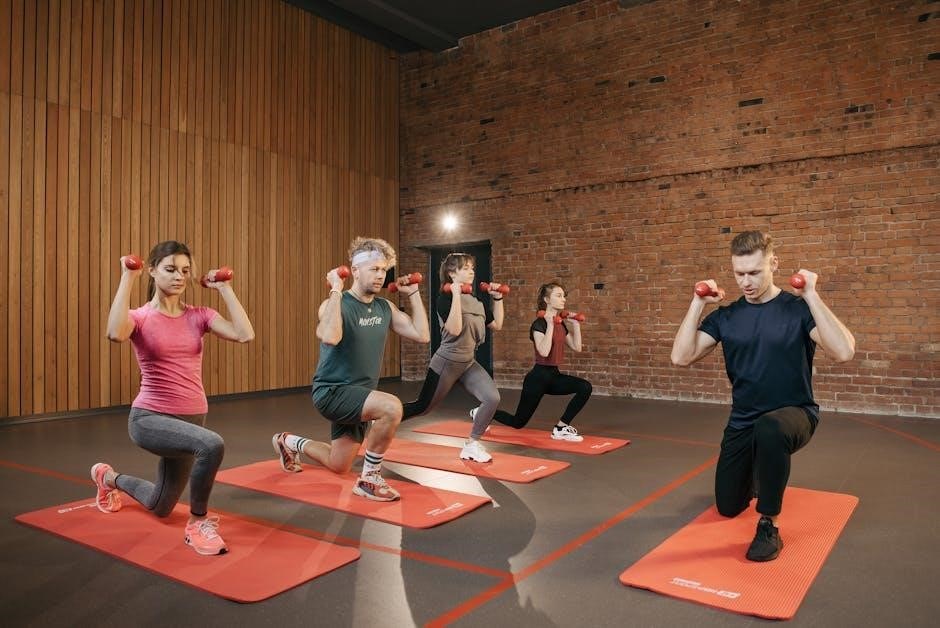
1.1 What is the Conjugate Training Program?
The Conjugate Training Program is a strength and conditioning system designed to maximize strength, power, and athleticism. It combines three primary training methods: maximal effort, dynamic effort, and repetition effort. This approach allows athletes to address weaknesses and build well-rounded strength. The program emphasizes rotating exercises regularly to avoid plateaus and promote continuous progress. It is widely used by strength coaches and athletes due to its efficiency and effectiveness in improving performance. The conjugate method focuses on integrating different training modalities to enhance overall physical capabilities. It is particularly popular in powerlifting and weightlifting communities, offering a structured yet flexible framework for achieving strength goals. By incorporating varied stimuli, the program ensures consistent gains and reduces the risk of overtraining.
1.2 Historical Background and Development
The Conjugate Training Program originated from the work of Louie Simmons at Westside Barbell in Columbus, Ohio. Simmons developed this method based on Soviet training principles, focusing on addressing weaknesses and improving strength. The program gained popularity in the 1980s and 1990s as a revolutionary approach to strength training. It was designed to counteract the limitations of traditional linear periodization by incorporating varied training stimuli. Simmons’ work laid the foundation for modern conjugate training, emphasizing exercise rotation and the integration of maximal, dynamic, and repetition efforts. This system has since been widely adopted in powerlifting and strength training communities worldwide, becoming a cornerstone of advanced strength development. Its evolution continues to influence athletes and coaches seeking efficient and effective training methods.
1.3 Key Principles of the Conjugate Method
The Conjugate Method revolves around three primary principles: maximal effort, dynamic effort, and repetition training. Maximal effort focuses on lifting heavy weights, often above 90% of one’s 1RM, to build absolute strength. Dynamic effort uses sub-maximal weights with explosive intent to enhance speed and power. Repetition training targets muscle endurance and hypertrophy through higher volume and reps. Another key principle is exercise variation, where movements are regularly rotated to avoid plateaus and address weaknesses. Additionally, the program emphasizes the importance of accessory work to strengthen supporting muscles. This holistic approach ensures balanced development and continuous progress, making it highly effective for athletes and lifters seeking comprehensive strength gains. The method’s flexibility allows for customization based on individual goals and needs, ensuring sustained growth and adaptation.

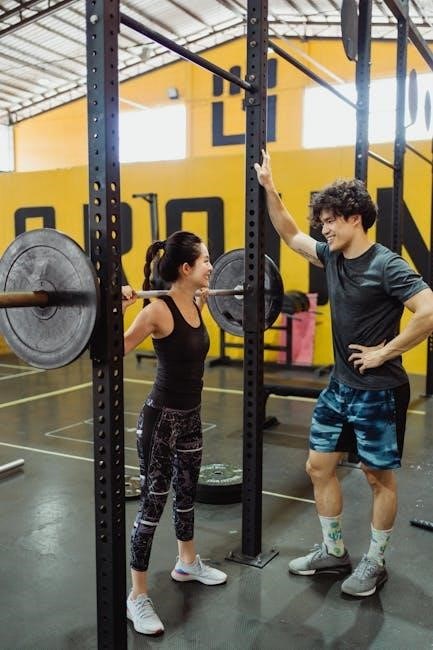
Structure of a Conjugate Training Program
A well-structured conjugate program typically includes 4 training days per week, focusing on maximal effort, dynamic effort, and repetition methods, with accessory exercises for weak points.
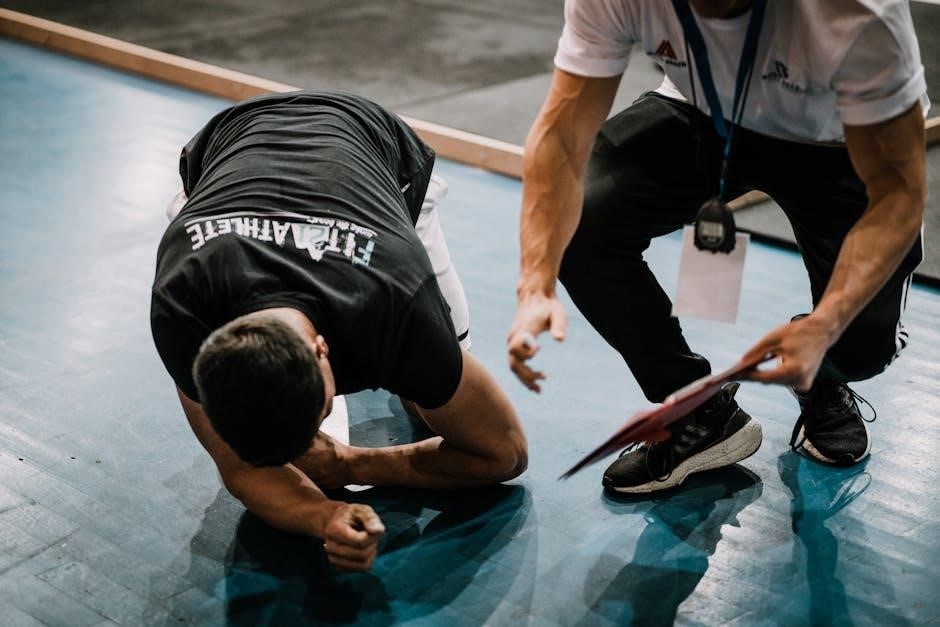
2.1 Weekly Training Split and Schedule
A typical Conjugate Training Program follows a 4-day weekly split, balancing maximal and dynamic efforts. Each day focuses on specific muscle groups:
- Day 1: Max Effort Lower (e.g., squat variations) with accessory work for weak points.
- Day 2: Max Effort Upper (e.g., bench press variations) and recovery techniques.
- Day 3: Dynamic Effort Lower (e.g., speed pulls or box squats) with flexibility exercises.
- Day 4: Dynamic Effort Upper (e.g., speed bench or overhead presses) and additional accessory work.
This structure ensures balanced development and prevents overtraining, allowing for progressive overload and recovery.
2.2 Exercise Selection and Rotation
Exercise selection in the Conjugate Training Program focuses on rotating movements to target weak points and prevent plateaus. Core lifts like squats, deadlifts, and bench presses are prioritized, but variations (e.g., safety squat bar, close-grip bench) are regularly rotated every 1-3 weeks. This ensures comprehensive strength development and avoids overuse injuries. Accessories, such as pull-throughs or tricep extensions, are added to address specific weaknesses. The program encourages experimentation to find exercises that work best for each individual, promoting adaptability and long-term progress. Regular rotation keeps training dynamic, ensuring continuous improvement in strength and athleticism.
2.3 Periodization and Progression
Periodization in the Conjugate Training Program involves structuring training phases to optimize strength gains and prevent overtraining. The program cycles through maximal effort, dynamic effort, and repetition methods, typically lasting 1-3 weeks per phase. Progression is achieved by increasing intensity or volume gradually, using RPE (Rate of Perceived Exertion) and 1RM (one-rep max) as guides. Deload weeks are incorporated to allow recovery and maintain long-term sustainability. The program emphasizes flexibility, enabling adjustments based on individual responses and goals. By alternating focuses and managing intensity, the Conjugate Method ensures consistent progression while minimizing the risk of burnout, making it adaptable for both beginners and advanced trainees.

Methods Used in the Conjugate Training Program
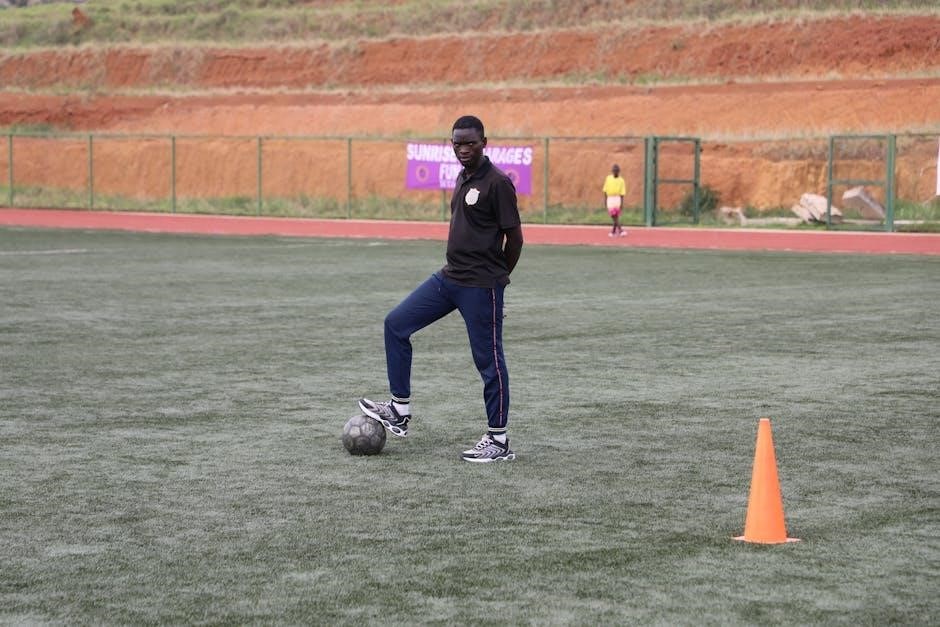
The Conjugate Training Program incorporates maximal effort, dynamic effort, and repetition methods to enhance strength and muscle development. These methods ensure comprehensive training and balanced progress.
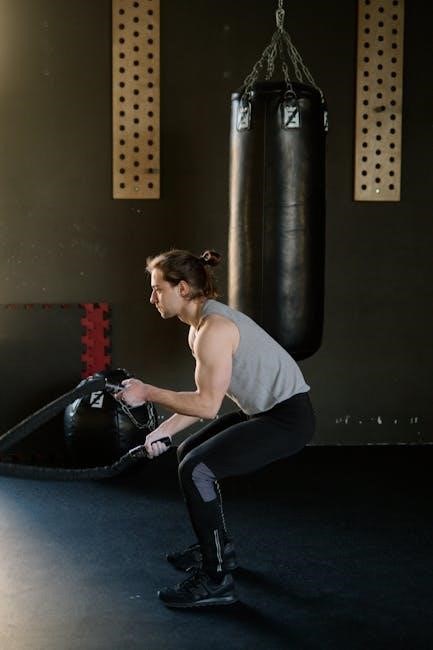
3.1 Maximal Effort Training
Maximal effort training is a cornerstone of the Conjugate Training Program, focusing on lifting the heaviest possible weights to build absolute strength. This method involves performing exercises like squats, deadlifts, and bench presses at or near maximum capacity. The goal is to progressively increase the load over time, which stimulates significant muscle growth and neural adaptation; By regularly challenging the body with maximal weights, trainees develop the strength and resilience needed for advanced training. This approach is essential for breaking through plateaus and achieving long-term strength gains, making it a fundamental component of the Conjugate Method.
3.2 Dynamic Effort Training
Dynamic Effort Training focuses on performing lifts with sub-maximal weights but at maximal velocity, emphasizing speed and power. This method involves using chains, bands, or other resistance tools to increase intensity. By prioritizing explosive movement, trainees enhance neuromuscular coordination and muscle fiber recruitment. Dynamic effort work complements maximal effort training by improving the ability to generate force quickly, which is critical for athletes and lifters seeking to enhance performance. This approach also helps maintain technical proficiency and reduces the risk of overtraining associated with heavy loads. Regular incorporation of dynamic effort exercises ensures a balanced development of strength and power, making it a vital component of the Conjugate Training Program.
3.3 Repetition Method
The Repetition Method involves using moderate weights for higher volumes of repetitions to build muscle endurance and hypertrophy. This approach typically employs 70-85% of one’s 1RM for 3-5 sets of 5-8 repetitions. Unlike maximal and dynamic efforts, the repetition method focuses on accumulating fatigue and metabolic stress rather than generating maximum force or speed. It is a cornerstone for building muscle mass and improving muscular endurance, which supports overall strength development. The repetition method also aids in recovery between maximal effort days and helps maintain technique consistency. By cycling through different exercises and rep ranges, trainees can target weak points and enhance overall athleticism without the risks associated with high-intensity efforts. This method is integral to the Conjugate Program, ensuring a balanced approach to strength and muscle development.

Implementing the Conjugate Training Program
The Conjugate Training Program emphasizes balancing intensity with recovery through RPE, accessory work, and flexibility strategies to optimize strength gains and prevent overtraining.
4.1 Understanding RPE (Rate of Perceived Exertion)
RPE, or Rate of Perceived Exertion, is a critical component of the Conjugate Training Program, allowing individuals to gauge their effort levels accurately. This subjective measure helps athletes and lifters determine how hard they’re working during a set, ensuring they stay within optimal training zones. RPE scales typically range from 1 to 10, with 1 being very light effort and 10 being maximum effort. By using RPE, trainees can adjust weights and volume based on daily readiness, preventing overtraining and enhancing recovery. This flexible approach ensures that each session is productive without unnecessary strain, making it a cornerstone of sustainable progress in strength training programs.
4.2 Accessory Work and Weak Point Training
Accessory work and weak point training are integral to the Conjugate Training Program, focusing on addressing imbalances and enhancing overall performance. These exercises target specific muscle groups or movements that may be lagging, ensuring comprehensive development. For example, reverse hypers and pull-throughs are often used to strengthen the posterior chain, while tricep extensions and face pulls target weak points in the upper body. By identifying and attacking these areas, lifters can improve their main lifts and reduce injury risk. Accessory work is typically performed at a higher volume but lower intensity than main lifts, allowing for consistent progress without overtaxing the central nervous system. This approach ensures a well-rounded and resilient athlete.
4.3 Flexibility and Recovery Strategies
Flexibility and recovery are crucial components of the Conjugate Training Program, ensuring athletes maintain mobility and reduce injury risk. Techniques like dynamic stretching, foam rolling, and mobility drills are emphasized to improve range of motion and muscle recovery. Recovery strategies also include rest days, sleep optimization, and stress management to allow the body to adapt to the demands of training. Additionally, methods such as contrast showers, compression garments, and massage can enhance recovery. Neglecting these practices can lead to overtraining and decreased performance. By prioritizing flexibility and recovery, athletes can sustain long-term progress and maintain peak physical condition throughout their training cycle.
This comprehensive program boosts strength, flexibility, and recovery. PDFs and resources are available through Westside Barbell and online forums for detailed implementation.
5.1 Benefits of the Conjugate Training Program
The Conjugate Training Program offers numerous benefits, including enhanced maximal strength, improved flexibility, and accelerated recovery. It addresses weak points, preventing injuries and promoting balanced development. By integrating varied training methods, athletes achieve holistic fitness and peak performance. The program’s adaptability suits both beginners and advanced lifters, ensuring continuous progress. Resources like Conjugate Training Program PDFs provide structured guidance, making it accessible for individuals to implement effectively. Overall, this method is a versatile and efficient approach to strength training, yielding significant results for those who commit to its principles.

5.2 Where to Find Conjugate Training Program PDFs
Conjugate Training Program PDFs are widely available online, offering detailed guides and templates for implementation. Official sources like Westside Barbell and Louie Simmons’ publications provide authentic materials. Online marketplaces such as Amazon and fitness websites often host downloadable resources. Additionally, forums and communities like Reddit’s r/weightroom frequently share PDFs and discuss program specifics. Many strength training websites also offer free or paid Conjugate Training Program PDFs, catering to both beginners and advanced athletes. These resources are invaluable for those seeking structured plans and expert advice;

